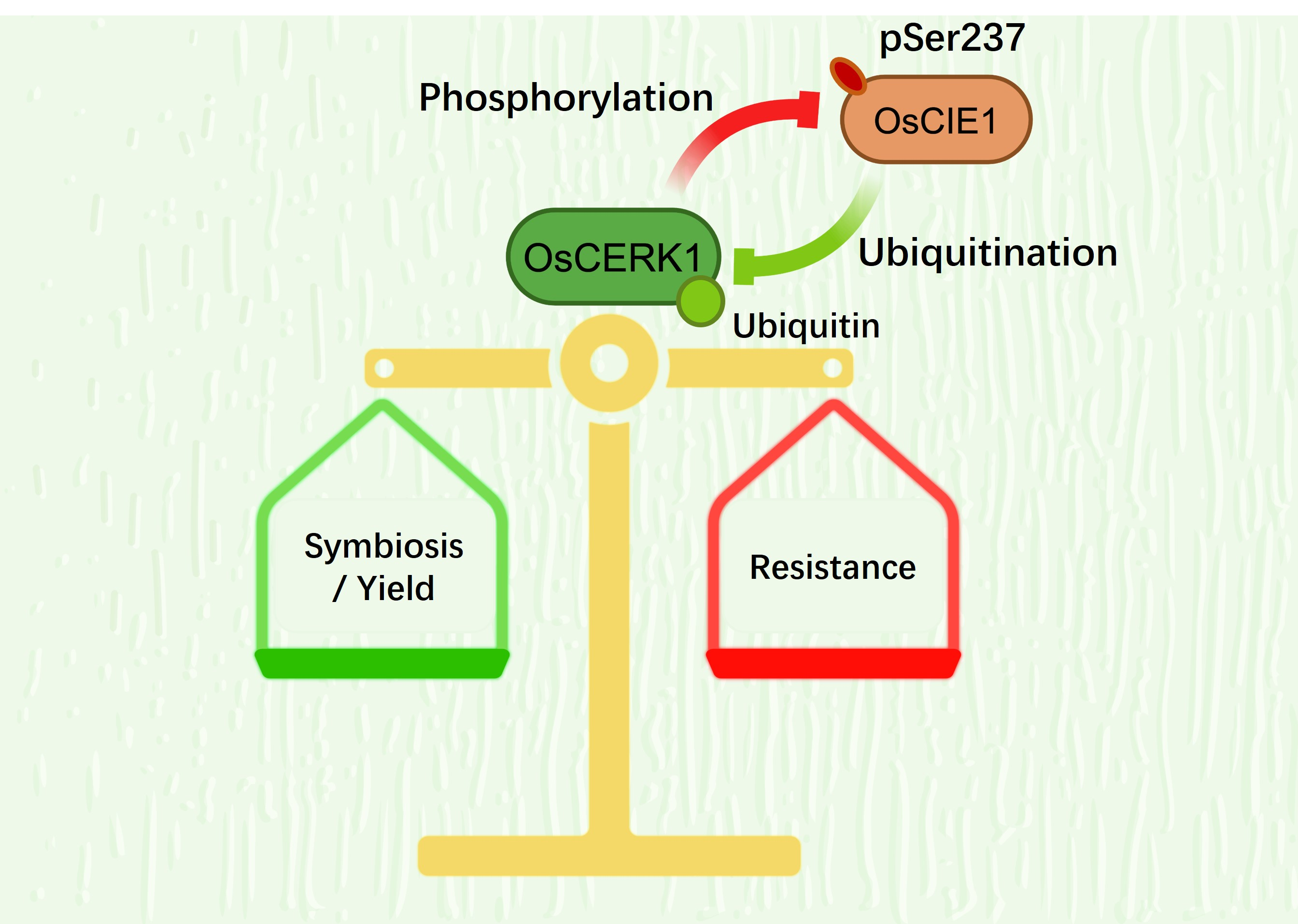New Mechanisms for Immune Response and Growth Regulation in Rice Uncovered by Recent Study
Researchers at the Center of Excellence for Molecular Plant Sciences, Chinese Academy of Sciences, led by Wang Ertao, in collaboration with Zhang Yu and Academician He Zuhua, have made a groundbreaking discovery in rice immune mechanism research. The study, titled "Release of a ubiquitin brake activates OsCERK1-triggered immunity in rice," has been published in the prestigious journal Nature, offering new insights into the regulation of plant immune responses and growth balance.
This research utilized a combination of biochemistry, genetics, and structural biology to unravel the complexities of the rice immune system. The team successfully identified a crucial E3 ubiquitin ligase, OsCIE1, which plays a significant role in regulating the activity of the receptor kinase OsCERK1, a key player in rice's immune and symbiosis response.
In rice, the receptor-like kinase OsCERK1 recognizes molecular signals from both symbiotic and pathogenic microbes. Upon detecting the chitin oligosaccharides of pathogenic fungi, OsCERK1 swiftly activates the plant’s immune response. However, excessive immune responses can hinder rice growth, impacting yield and quality, necessitating a balance between immunity and yield.
The study’s key finding is the discovery of OsCIE1, which acts as a molecular brake, ubiquitinating OsCERK1 to prevent unnecessary immune responses during normal conditions. When pathogenic fungi are present, OsCERK1 is activated and phosphorylates OsCIE1, inhibiting its ubiquitin ligase activity and allowing an immediate immune response. This mechanism highlights the sophisticated regulatory system plants use to balance internal growth with external threats.
Additionally, the study identified that the phosphorylation site Ser237 in OsCIE1 is conserved across various species, indicating a broader relevance of this regulatory mechanism. This discovery not only advances our understanding of rice immunity, but also offers new insights into immune responses in other plants.
Wang Ertao, Zhang Yu, and He Zuhua are the corresponding authors of this study. The work involved contributions from postdoctoral researcher Wang Gang and doctoral student Chen Xi from Wang Ertao’s group, and Dr. Yu Chengzhi from Zhang Yu’s group. Wang Ertao's group has long been dedicated to plant-microbe interaction research, providing valuable insights for agricultural production and ecological protection.
A phosphorylation switch and the brake/release model for OsCIE1-OsCERK1-mediated immunity
Contact:
Dr. Ertao Wang
National Key Laboratory of Plant Molecular Genetics, CAS Center for Excellence in Molecular Plant Sciences (CEMPS), Chinese Academic of Sciences
